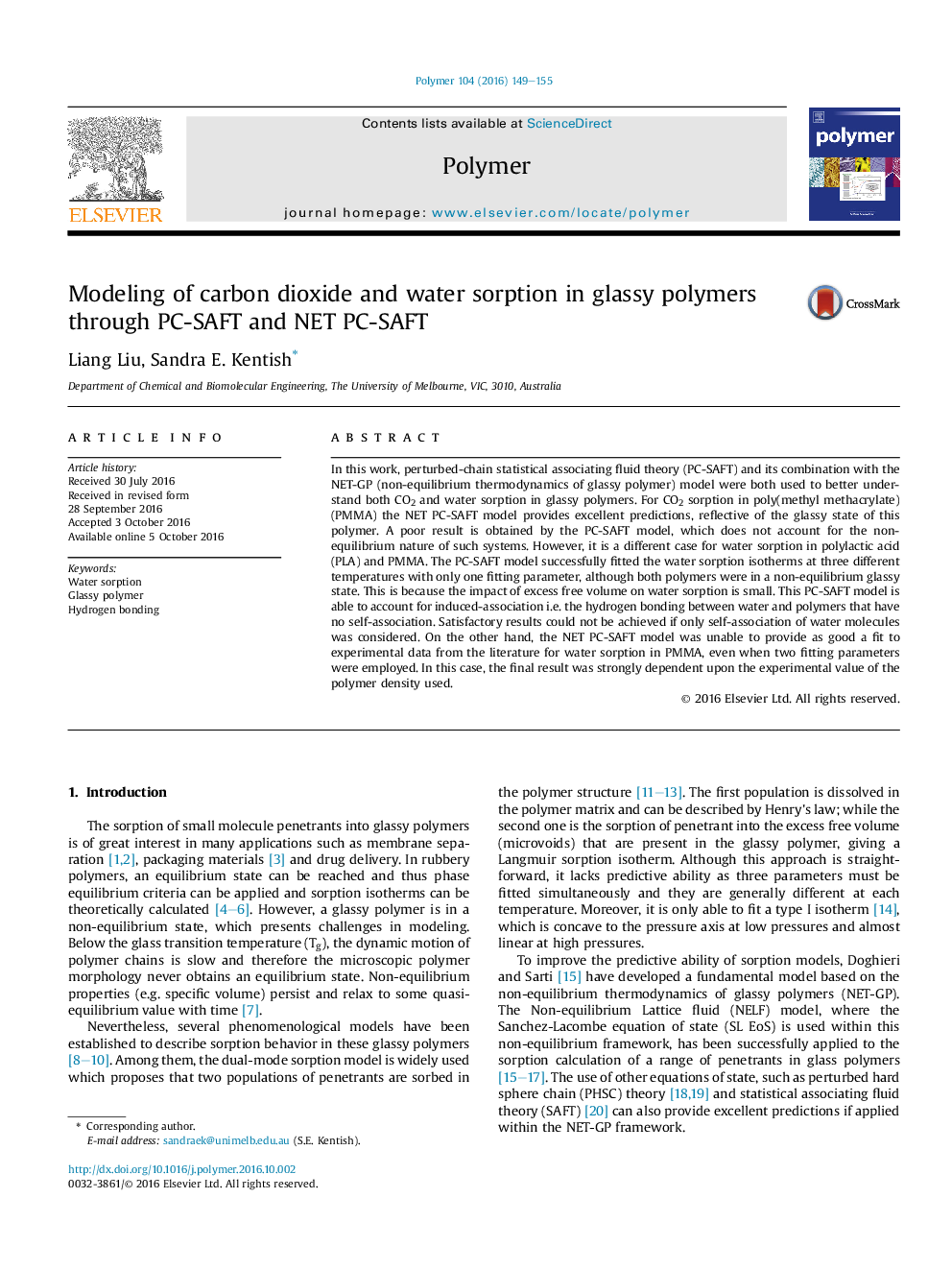| کد مقاله | کد نشریه | سال انتشار | مقاله انگلیسی | نسخه تمام متن |
|---|---|---|---|---|
| 5178750 | 1502502 | 2016 | 7 صفحه PDF | دانلود رایگان |

- Water sorption isotherms in two glassy polymers (PLA and PMMA) successfully modeled by the PC-SAFT model.
- Induced-association between water and the polymer chains was critical to the water sorption modeling.
- The NET PC-SAFT model predicted CO2 sorption well but was less useful for water sorption in PMMA.
In this work, perturbed-chain statistical associating fluid theory (PC-SAFT) and its combination with the NET-GP (non-equilibrium thermodynamics of glassy polymer) model were both used to better understand both CO2 and water sorption in glassy polymers. For CO2 sorption in poly(methyl methacrylate) (PMMA) the NET PC-SAFT model provides excellent predictions, reflective of the glassy state of this polymer. A poor result is obtained by the PC-SAFT model, which does not account for the non-equilibrium nature of such systems. However, it is a different case for water sorption in polylactic acid (PLA) and PMMA. The PC-SAFT model successfully fitted the water sorption isotherms at three different temperatures with only one fitting parameter, although both polymers were in a non-equilibrium glassy state. This is because the impact of excess free volume on water sorption is small. This PC-SAFT model is able to account for induced-association i.e. the hydrogen bonding between water and polymers that have no self-association. Satisfactory results could not be achieved if only self-association of water molecules was considered. On the other hand, the NET PC-SAFT model was unable to provide as good a fit to experimental data from the literature for water sorption in PMMA, even when two fitting parameters were employed. In this case, the final result was strongly dependent upon the experimental value of the polymer density used.
Journal: Polymer - Volume 104, 8 November 2016, Pages 149-155